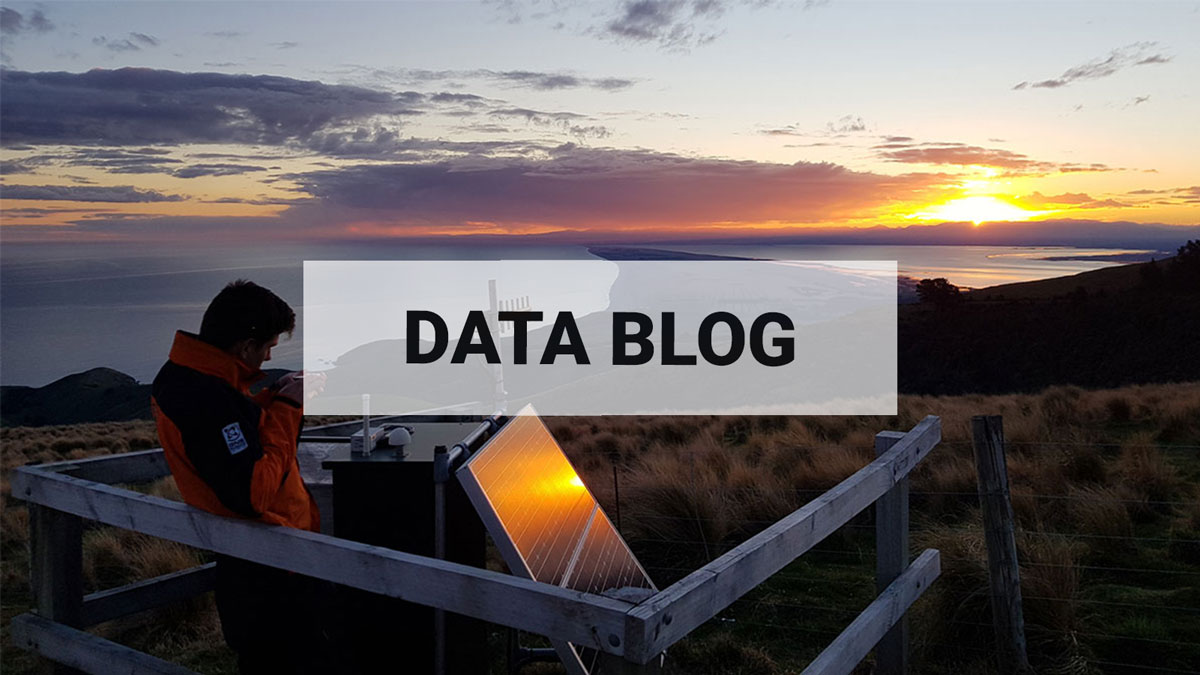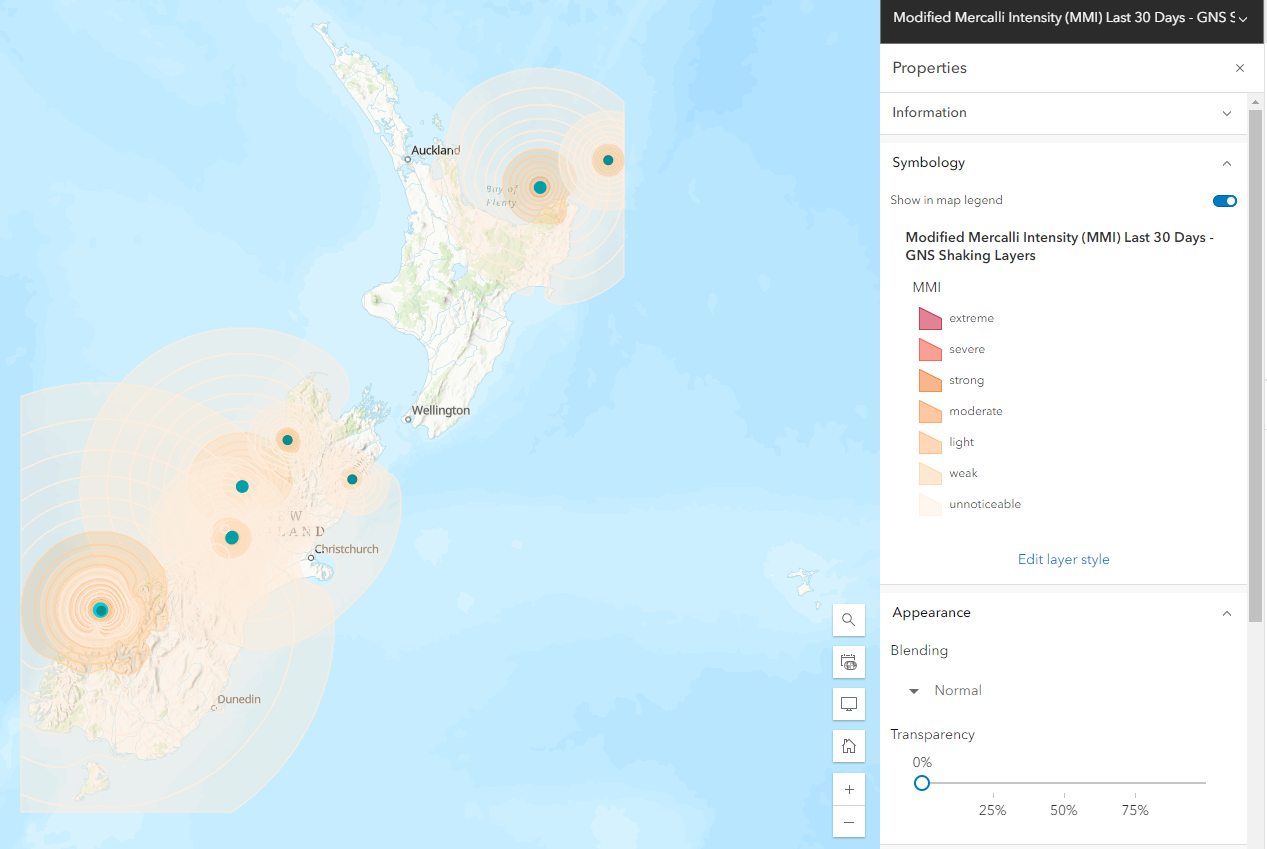
Shaking Layers is now available in ArcGIS Online
Welcome, haere mai to another GeoNet Data Blog. Today’s blog is about a new product release – Shaking Layers is now available on ArcGIS Online!
We have released an exciting new feature for Shaking Layers, which makes recent earthquake data available on Arc GIS Online and desktop GIS software such as ArcGIS Pro and QGIS desktop application. Now, when an earthquake occurs and you just have to know how fast the ground shook, you can find the latest layers directly in ArcGIS Online.
Much like Shaking Layers on the GeoNet website, these layers are available within 10 to 20 minutes of an earthquake for events that have a recorded Modified Mercalli Intensity (MMI) of 4.0 or above.
There are many applications for this data – especially planning for and responding to earthquakes. Just a few we know will find it useful include engineers, insurance analysts, planners, researchers, infrastructure managers, and emergency responders. But we hope that doesn’t stop anyone else diving into the data and discovering a new thing or two about ground shaking.
To view the Shaking Layers maps in ArcGIS Online you need to create an account or sign into the online portal here. Once logged in, you can view the Shaking Layers on an interactive map by clicking on the feature layer you want in the GeoNet Open Data group. Alternatively you can add the Shaking Layers to an existing interactive map by searching for GeoNet Shaking Layers in the ArcGIS panel of the layers menu on the left of the interactive map viewer or within ArcGIS Pro.
Each available layer displays earthquake events from the last 30 days. When Shaking Layers are added to the interactive map, you can filter events by quake id, magnitude, depth, time and the layer specific values like MMI, Peak Ground Acceleration (PGA), Peak Ground Velocity (PGV) and Pseudo Spectral Acceleration (PSA).
We like to ensure we are providing you with the latest and greatest information possible. So, the automated maps and GIS layers may be updated by GNS seismologists as more information becomes available, particularly for large events where an earthquake can rupture the subsurface for tens to hundreds of kilometres, meaning strong shaking may occur far from the epicentre.
We go where the people are. We chose ArcGIS Online because it is widely used throughout the science industry, emergency management agencies, and infrastructure sectors. That said, we hope others will find our product useful for whatever their endeavour may be, or even just as an intriguing way to explore how our environment responds to seismic events that generate from many kilometres beneath the surface.
Users can map their own data layers with Shaking Layers earthquake data to help gain perspective of possible earthquake damage to help them plan and allocate resources to the most important regions. The layers can be used within desktop GIS software such as ArcGIS Pro and QGIS.
You can have a play with the data by toggling the layers on and off. All the layers are available separately, so that users can add those they are interested in. Available lavers are:
- Shaking Layers epicentre
- MMI intensity
- PGA
- PGV
- three PSA layers: 0.3 seconds, 1.0 seconds, and 3.0 seconds.
That’s it for now
We aim for a customer satisfaction guarantee so a big thank you to the GIS experts from a variety of organisations who helped test this new service and provided crucial feedback on functionality.
Shaking Layers has been developed by GeoNet and the Rapid Characterisation of Earthquakes and Tsunami Endeavour programme. For more information on how to use Shaking Layers visit the Shaking Layers web page.
You can find our earlier blog posts through the News section on our web page, just select the Data Blog filter before hitting the Search button. We welcome your feedback on our data blogs and if there are any GeoNet data topics you’d like us to talk about please let us know!
Ngā mihi nui.


